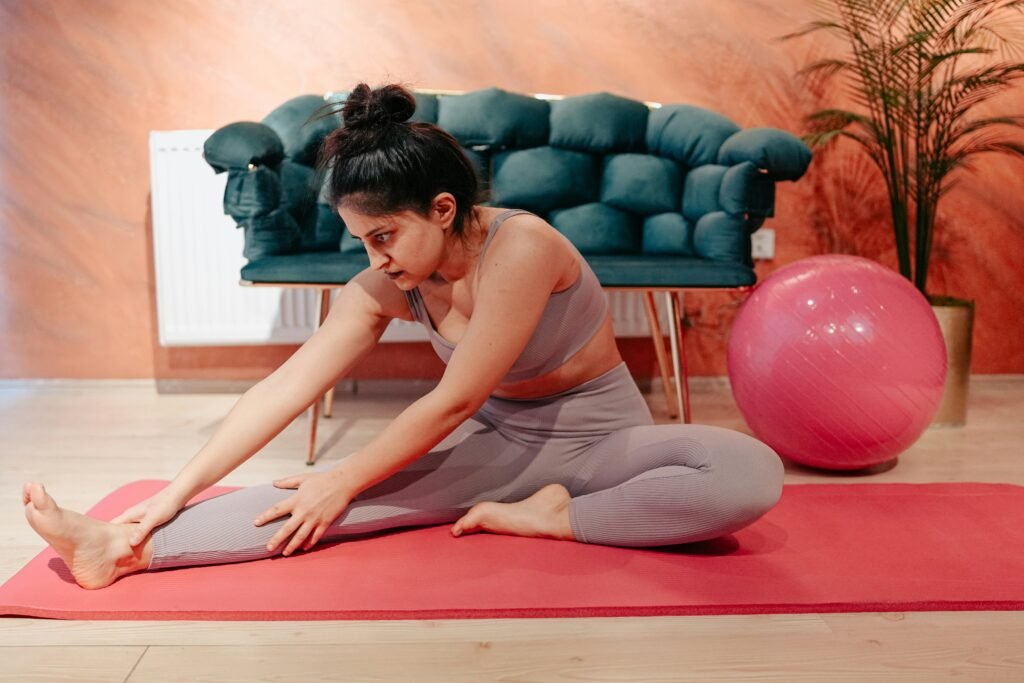How to Build a Morning Routine You’ll Actually Enjoy
Finding Your Morning Groove
You know those rare mornings when everything just clicks? The coffee smells amazing, the sunlight sneaks through the curtains, and somehow—you don’t feel rushed? For years, that was NOT my life. I’d snooze my alarm three times, scramble to get dressed, forget something important, and start my day already stressed.
What changed? I realized I didn’t need someone else’s “perfect” morning routine. I needed one that actually felt good for me.
I used to read all those articles about miracle mornings—wake up at 5 AM, take a freezing cold shower, run a marathon before breakfast… and honestly, they made me want to crawl deeper under the covers. It felt more like punishment than self-care.
So I ditched the rules and paid attention to my own rhythm. Some mornings, I craved gentle stretches and a few minutes with my journal. Other days, I wanted quiet time to brainstorm or sip coffee slowly. That’s when it clicked: there’s no one-size-fits-all morning routine. The best one is the one you actually enjoy.
And the benefits go beyond mornings. Research shows that simple routines can cut decision fatigue, boost productivity, and even improve your overall mood. Starting the day intentionally isn’t just “nice”—it sets the tone for everything that follows.

The Real Secret to Morning Routine Success
Here’s the truth: sticking with a morning routine isn’t about willpower—it’s about alignment. The best routines work with who you are, not against it.
That’s why so many people fail. They copy someone else’s routine. Sure, the “5 AM Club” might work for some CEOs, but if your body naturally prefers slower mornings, forcing that will just leave you frustrated.
Studies even back this up: routines built around your own values and preferences are way more likely to last than generic, one-size-fits-all versions. Your morning should feel like coming home to yourself—not like running a bootcamp you never signed up for.
And the most sustainable routines? They mix consistency with flexibility. A little structure gives your brain the signal: “Day, let’s do this.” But the freedom to adapt keeps it realistic.
My Morning Routine “Lightbulb” Moment
For a long time, mornings filled me with dread. Every new “miracle morning” plan I tried lasted… maybe three days. I’d quit, feeling like a failure, and go back to chaotic starts.
Then my partner said something that shifted everything: “What if you built your mornings around things you actually like?”
It sounds obvious, but I’d never tried it. Instead of forcing myself to meditate for 20 minutes (which I hated), I started with two minutes of deep breathing while sipping my coffee. Instead of a hard workout, I put on a playlist I loved and stretched for five minutes.
Something magical happened. I wanted to keep going. Over time, two minutes became ten. Stretching turned into a short yoga flow I now look forward to. The more I built my mornings around joy, the easier it was to stick with them.
And my family noticed, too. “Mom, you’re not grumpy anymore,” my daughter said one morning. That one small shift didn’t just change my mood—it softened the whole vibe of our mornings together.
Why This Works
The trick is starting with what feels good. Most routines fail because they’re built on guilt or obligation. But when you include things that spark joy—like the smell of coffee, music you love, or the cozy feel of a blanket—your brain starts associating mornings with something positive.
That’s biology, too. Pleasant activities release dopamine, making you more likely to repeat them. Before you know it, mornings stop being something you push through and become something you look forward to.
And you don’t have to overhaul your life overnight. Small, stacked habits are the way to go. Think of it as layering one simple ritual onto another until you’ve got a rhythm that feels effortless.
What You’ll Need
- Just 10–30 minutes for yourself (start small!)
- A couple of activities that bring you real joy (not just the “shoulds”)
- A tiny bit of prep the night before (clothes laid out, coffee ready)
- Something to look forward to (music, tea, sunlight, whatever feels good)
- And above all: patience with yourself.
How to Build Your Routine
Step one: observe your natural patterns for a few days. When do you feel most alert? What mornings already feel good?
Step two: pick your “minimum routine.” Keep it simple. Maybe it’s just drinking a glass of water and taking three minutes to breathe before checking your phone. That alone can change the tone of your morning.
Step three: add a “joy anchor.” Something small that makes you happy—like your favorite playlist, reading a few inspiring lines, or stretching in the sun. Mix one sensory pleasure with one meaningful activity.
Step four: test and tweak. Some people like to tackle their toughest task first, others prefer easing into the day. Play around until you find the sequence that lifts you up instead of dragging you down.
Tips to Make It Stick
- Prep your space: a tidy counter, your journal ready, or a pre-set coffee maker can make mornings easier.
- Keep a simple framework—like “hydrate + move + reflect”—but allow flexibility in how you do it.
- If you’ve got kids, even waking up 15 minutes before them can give you a moment of peace.
Embracing Your Mornings
At the end of the day, your morning routine shouldn’t feel like another box to check. It should feel like a gentle launch into your day—something that leaves you calmer, lighter, and more energized.
And don’t worry about perfection. Three minutes of a routine you actually enjoy will do more for you than an hour of something you secretly hate. Start small, build slowly, and let your mornings become a part of the day you look forward to instead of dread.

Frequently Asked Questions For Morning Routines
Q: How long should a morning routine take?
A: The ideal length varies by individual. Start with just 10-15 minutes and expand as desired. Research shows even brief routines (5-10 minutes) produce significant benefits when practiced consistently.
Q: I’m not a morning person. Can I still benefit from a morning routine?
A: Absolutely! Night owls should design gentler morning sequences that honor their chronotype. Focus on pleasant activities that ease the transition rather than demanding peak performance immediately upon waking.
Q: What’s the single most important element of an effective morning routine?
A: Consistency outweighs specific activities. Find something sustainable you can practice daily, even in abbreviated form when necessary. The neural pathways strengthened through consistency create the foundation for all other benefits.
Q: Should I include exercise in my morning routine?
A: Movement benefits most people, but the type and intensity should match your preferences and energy patterns. This might be gentle stretching, yoga, walking, or more vigorous exercise depending on what feels supportive.
Q: How do I maintain my morning routine while traveling?
A: Create a portable “minimum viable routine” that captures the essence of your practice without requiring specific equipment or spaces. Focus on the feeling your routine generates rather than exact replication.
Q: Is it better to shower in the morning or evening?
A: This depends on your personal preference and skin type. Morning showers can increase alertness, while evening showers may improve sleep quality. Some people benefit from a brief morning rinse for waking up and a more thorough evening cleanse.
Q: Should I check emails/social media as part of my morning routine?
A: Most productivity experts recommend delaying digital inputs until after completing your core routine. This preserves your attention and emotional state, preventing external demands from hijacking your priorities.
Q: How long does it take to establish a morning routine habit?
A: Research varies, but most habit formation studies suggest 18-254 days, with an average of 66 days for automation. The key is consistency during this establishment phase.
Q: Can I have different routines for weekdays versus weekends?
A: Yes! Many people benefit from maintaining core elements (like hydration and brief movement) while allowing for a more relaxed timeline and additional pleasurable activities on weekends.
Q: What if I have young children who make consistent routines impossible?
A: Focus on “routine elements” rather than a fixed sequence. Identify 2-3 core practices that can be implemented even amid interruptions, and be flexible about timing and duration.
Q: Is it better to eat breakfast early or practice intermittent fasting?
A: Both approaches show benefits in research. The key is consistency and listening to your body’s hunger signals. Some people function best with early protein intake, while others benefit from extending their overnight fast.
Q: How do I avoid falling back into old habits when my routine gets disrupted?
A: Establish a “minimum viable routine” of just 2-5 minutes that you can maintain even during disruptions. This maintains the neural pathway while acknowledging temporary limitations, making it easier to resume your full routine when circumstances allow.

